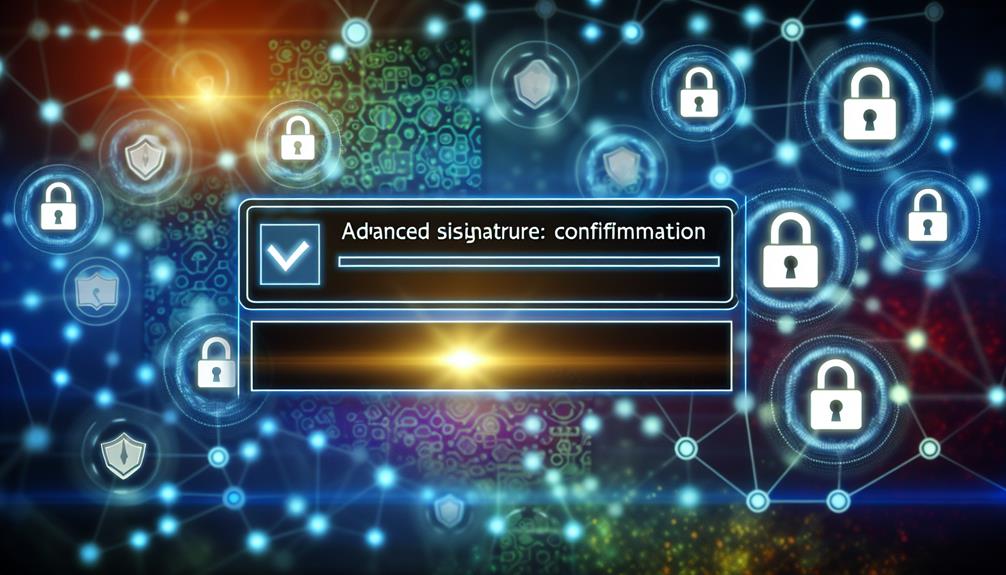Once your crypto wallet signs a transaction, it's just the beginning of a complex process. That signature gets attached to your transaction data and is sent out to the network, but what happens next? Miners step in to verify the signature and check for any potential double spending. If they find everything in order, your transaction enters the mempool, but it doesn't stop there. Understanding the implications of this process on security and user experience can be vital, and you might be surprised by what unfolds from this point onward.
Transaction Broadcasting
Once your crypto wallet generates a digital signature, the next vital step is transaction broadcasting. This process involves sending your signed transaction to the network, making certain it reaches the appropriate nodes for validation. The efficiency of broadcasting relies greatly on the wallet type you're using. Different wallet types—like hardware, software, and mobile wallets—vary in their speed and methods of broadcasting transactions.
When you initiate broadcasting, your wallet typically connects to a node in the network. This connection is essential, as it helps guarantee your transaction is propagated quickly and effectively. The transaction is then packaged with relevant data, including the digital signature, recipient address, and the amount being transferred. You'll often encounter transaction fees at this stage, which are vital for incentivizing miners to prioritize your transaction. Higher fees can expedite processing time, while lower fees might result in delays, especially during network congestion.
It's important to understand that each wallet type may handle transaction fees differently. For instance, software wallets often allow you to customize fees, giving you more control over how quickly your transaction is processed. In contrast, hardware wallets may have preset fee structures, which can limit your options. Consequently, as you broadcast your transaction, consider both the type of wallet you're using and the fee structure in place. This knowledge empowers you to optimize your transaction broadcasting, making certain it's both timely and cost-effective.
Miner Verification Process
The miner verification process is vital in guaranteeing the integrity and security of transactions within the blockchain network. Once your transaction has been broadcasted, it enters a pool of unconfirmed transactions, often referred to as the mempool. Miners then select transactions from this pool based on various criteria, primarily focusing on transaction fees. Higher fees typically incentivize miners to prioritize your transaction, as they're rewarded with these fees in addition to block rewards.
During verification, miners utilize their computational power to solve complex cryptographic puzzles. This activity is measured regarding hash rate, which reflects the number of hashes a miner can compute per second. A higher hash rate increases the chances of successfully mining the next block, thereby securing transactions. Each transaction is grouped with others to form a block, which is then hashed to create a unique identifier. This hash must meet certain criteria, making the process both competitive and resource-intensive.
As a miner validates transactions, they check for double spending or any inconsistencies in the data. This verification step guarantees that all transactions are legitimate and adhere to the network's consensus rules. Once the block containing your transaction is successfully mined, it is broadcasted to the network, leading to the next phase of inclusion in the blockchain. Consequently, the miner verification process plays an essential role in maintaining the network's reliability and trustworthiness, as well as facilitating the flow of transaction fees that incentivize miners.
Inclusion in the Blockchain

Inclusion in the blockchain is the fundamental next step after a miner successfully verifies and adds your transaction to a new block. This process guarantees that your transaction is not only recorded but also made immutable, contributing to the overall security and integrity of the blockchain. Once your transaction is included, it is vital to understand what happens next.
- Transaction Confirmation: Your transaction gets confirmed by subsequent blocks. Miners will keep adding blocks on top of the one containing your transaction, solidifying its permanence.
- Propagation Across Nodes: The new block, containing your transaction, is propagated across the network. Different wallet types—like hardware, software, and paper wallets—will reflect this update, allowing you to verify the change.
- Signature Method Validation: The signature method used in your transaction is validated through cryptographic techniques, ensuring that only the rightful owner of the wallet can authorize a transfer. Each wallet type has unique signature methods that affect how transactions are processed.
Understanding these steps is critical for grasping the blockchain ecosystem. You'll realize that your transaction's journey isn't merely about being recorded; it's about becoming part of a decentralized ledger, secured and validated by a network of miners and nodes. This process provides the cornerstone of trust in cryptocurrency, allowing you to engage confidently in digital transactions.
Confirmation and Finalization
After your transaction is recorded in the blockchain, the process of confirmation and finalization begins. This phase is essential for guaranteeing that your transaction is legitimate and securely integrated into the network. It starts with signature verification, where nodes in the network check the digital signature attached to your transaction. This verification process involves validating the cryptographic signature against the public key associated with your wallet. If the signature is valid, it confirms that you, the owner of the wallet, authorized the transaction.
Once the signature verification is complete, the transaction moves to transaction validation. In this stage, miners or validators aggregate your transaction with others into a block. They then conduct a thorough examination to guarantee that all transactions within the block adhere to the network's consensus rules, such as no double spending and sufficient balance. If your transaction passes this validation, it's included in the newly created block.
After the block is formed, it undergoes the mining process, where miners compete to solve complex mathematical problems. The first miner to solve it gets to add the block to the blockchain, effectively confirming all transactions within that block. As your transaction is confirmed, it becomes increasingly difficult to reverse or alter, ensuring its permanence on the blockchain. Only after a certain number of confirmations—often dictated by the network—can your transaction be considered finalized, providing a high level of assurance that it's been securely processed.
Implications for Users and Security

Understanding the implications of a successfully signed transaction on your crypto wallet is essential for ensuring both security and effective asset management. When you authorize a transaction, several factors come into play that can greatly affect your wallet security and user privacy.
- Transaction Authenticity: Each signed transaction is a cryptographic proof of your intent. If someone gains access to your private keys, they can initiate unauthorized transactions, jeopardizing your assets.
- Public Exposure: While your private keys remain confidential, the transaction details are recorded on the blockchain. This transparency can lead to potential privacy concerns, as anyone can trace transactions back to your wallet address.
- Network Vulnerability: The security of the blockchain network itself is fundamental. If there are vulnerabilities in the network protocol, attackers may exploit them, putting your signed transactions at risk.
To mitigate these risks, it's important to adopt robust wallet security measures. Use hardware wallets for offline storage, enable two-factor authentication, and regularly update your software. Additionally, consider using privacy-focused cryptocurrencies or services that enhance user privacy, such as coin mixers, to obscure transaction trails.
Ultimately, understanding these implications empowers you to make informed decisions about your crypto transactions, ensuring you maintain both wallet security and user privacy in the ever-evolving landscape of digital currencies.
Frequently Asked Questions
What Types of Crypto Wallets Can Sign Signatures?
You can use various crypto wallets to sign signatures, including hardware wallets for enhanced security, software wallets for convenience, mobile wallets for on-the-go access, and paper wallets for offline storage. Each type has unique advantages.
Can I Revoke a Transaction After Signing?
Once you've signed a transaction, you can't revoke it. The transaction confirmation relies on signature verification, ensuring integrity and security. Once verified, the transaction is immutable, making pre-signature caution essential in crypto dealings.
How Long Does a Signature Remain Valid?
A signature's validity period varies by blockchain protocol, typically lasting until the transaction's inclusion in a block. However, it's essential to take into account signature expiration policies, as they can differ markedly across different cryptocurrencies and platforms.
What Happens if My Wallet Is Compromised?
If your wallet's compromised, prioritize wallet security by changing passwords and enabling two-factor authentication. Explore recovery options, like seed phrase restoration or backup recovery, to regain control and minimize potential losses. Act quickly to mitigate risks.
Are Signatures Stored on the Blockchain?
Notably, over 60% of blockchain transactions involve signature processes, reinforcing blockchain security. However, signatures themselves aren't stored on the blockchain; instead, transaction data is recorded, ensuring authenticity without compromising privacy or efficiency.
Conclusion
Once your crypto wallet signs a transaction, it sets off on a journey through the digital ether, seeking validation and permanence. As miners scrutinize the signature, each tick of the clock heightens the anticipation of confirmation. When your transaction finally finds its place in the blockchain, it transforms from a mere idea into an indelible mark of trust and security. This intricate dance not only protects your assets but also weaves you into the fabric of a decentralized future.
